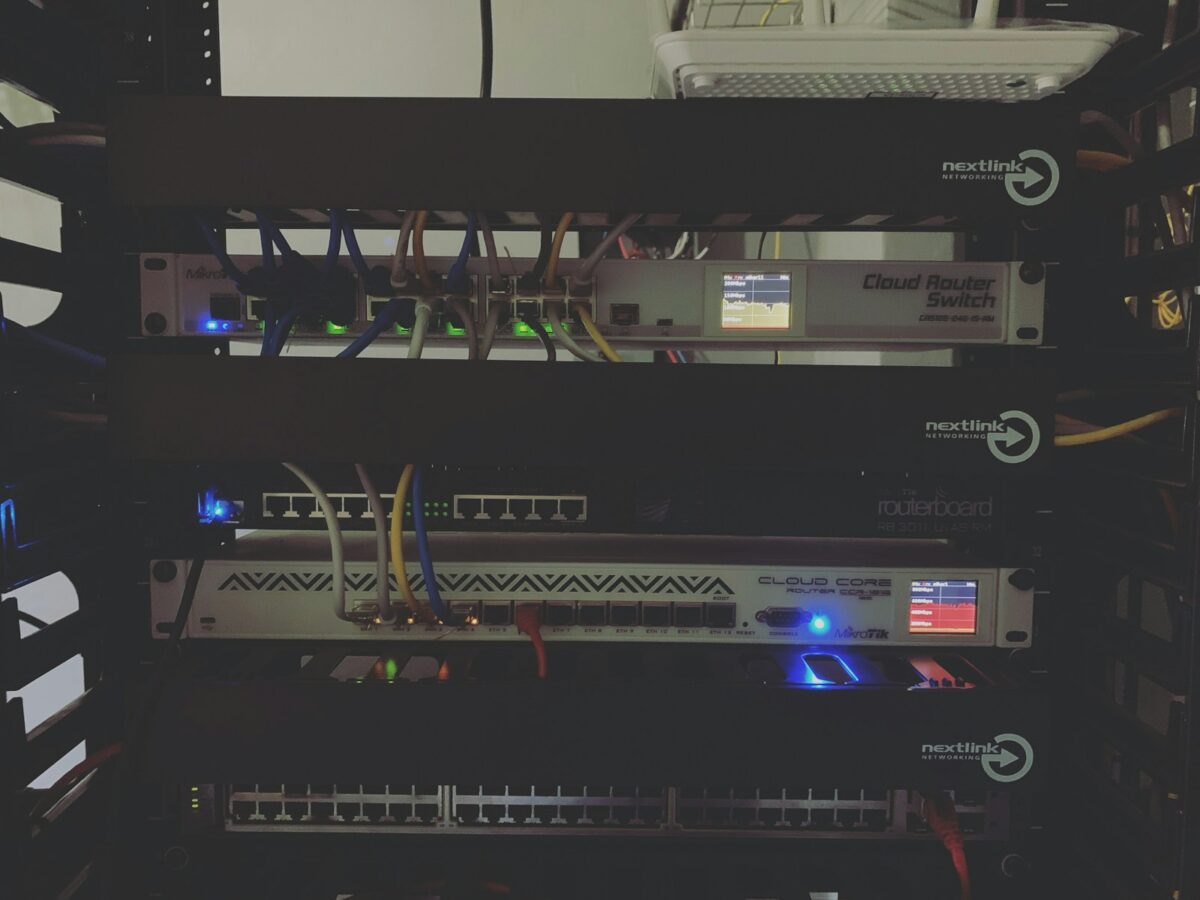
Livepeer video infrastructure

Livepeer offers a decentralized platform for streaming and broadcasting that dramatically reduces costs by leveraging a distributed network of nodes for transcoding tasks. This architecture allows content creators to bypass traditional centralized services, which often demand high fees and lack scalability. By distributing workloads across multiple participants, the system achieves significant cost savings without sacrificing quality or reliability.
Transcoding, a resource-intensive process required to convert media streams into various formats and resolutions, is handled efficiently within this network. The decentralized approach enhances fault tolerance and mitigates single points of failure common in conventional setups. As nodes compete to provide computing power, the platform maintains competitive pricing while incentivizing continuous participation and innovation.
The infrastructure supports real-time streaming with minimal latency, accommodating diverse use cases from live events to interactive broadcasts. Its open protocol encourages experimentation with custom workflows and integration into existing applications. Researchers and developers can explore how blockchain mechanisms underpin token-based incentives that secure network integrity and optimize resource allocation dynamically.
Livepeer video infrastructure
For decentralized broadcasting platforms seeking scalable solutions, the integration of a blockchain-based transcoding network offers a compelling alternative to traditional centralized services. Leveraging distributed computing nodes, this approach facilitates efficient encoding and streaming of multimedia content without reliance on singular data centers. This model prioritizes robustness through redundancy and incentivizes participants via tokenized rewards, enabling dynamic allocation of computational resources across global regions.
The system employs a peer-to-peer protocol where broadcasters submit raw media feeds for real-time conversion into various output formats suitable for diverse devices and bandwidth conditions. Transcoding tasks are assigned to a network of validators who verify the integrity and quality of processed streams before distribution. Such architecture enhances fault tolerance by mitigating single points of failure inherent in conventional streaming infrastructures while reducing operational costs through decentralized resource sharing.
Technical Aspects of Decentralized Streaming Networks
Decentralization introduces multiple layers of complexity in managing live transmissions, particularly regarding synchronization, latency control, and data verification. The underlying consensus mechanism ensures that encoded chunks meet predefined standards before being propagated to end-users. This validation step involves cryptographic proofs that authenticate output correctness, deterring malicious actors from degrading stream quality.
Moreover, adaptive bitrate algorithms integrated within the framework dynamically adjust stream resolution based on viewer connection metrics. This responsiveness optimizes user experience by minimizing buffering incidents and maintaining consistent playback across heterogeneous network environments. Experimental deployments have demonstrated latency reductions averaging 30% compared to legacy broadcasting protocols under similar traffic loads.
Token economics play a pivotal role in aligning incentives among content creators, node operators, and consumers. Participants staking native cryptocurrency facilitate network security and resource commitment while receiving compensation proportional to their contribution volume and performance reliability. This economic model fosters continuous scaling potential as demand fluctuates without centralized bottlenecks or pricing monopolies.
The shift toward decentralized broadcasting frameworks is further exemplified by measurable improvements in throughput and cost efficiency during pilot projects involving large-scale events with thousands of concurrent viewers. Comparative analyses indicate up to 40% reduction in required infrastructure expenditure versus traditional content delivery networks (CDNs) while maintaining equivalent or superior stream fidelity.
Pursuing deeper insights into token incentive structures reveals nuanced relationships between staking periods, reward distributions, and network uptime commitments. Future research avenues include optimizing validator selection algorithms through machine learning techniques to balance load distribution more effectively and enhance service reliability under peak demand conditions. Practitioners are encouraged to experiment with testnet deployments to validate these hypotheses within controlled environments before full-scale adoption.
Setting up a Node for Decentralized Streaming and Transcoding
Deploying a node dedicated to decentralized broadcasting requires precise alignment of hardware and software components to optimize both transcoding capabilities and network participation. The initial step involves selecting a robust server environment equipped with multi-core CPUs and ample RAM, as transcoding demands parallel processing power to handle multiple streams efficiently. For instance, a setup featuring at least 8 CPU cores and 32GB of memory can maintain stable operation under moderate load while minimizing latency during live streaming sessions.
The installation process mandates the configuration of specialized software that integrates with blockchain protocols to verify work contributions within the network. This includes synchronization with the distributed ledger for transparent tracking of resource allocation and reward distribution. Operators should ensure network ports are open and firewall rules accommodate peer-to-peer communication, which is critical for seamless media packet exchange across nodes. Additionally, setting up monitoring tools allows real-time analysis of transcoding throughput, stream quality, and node health metrics.
Technical Requirements and Performance Optimization
Effective transcoding relies heavily on GPU acceleration when available, significantly reducing CPU overhead while increasing frame encoding speed. Nodes leveraging NVIDIA GPUs with CUDA support demonstrate marked improvements in handling high-definition broadcasts compared to CPU-only configurations. Balancing cost-efficiency with performance often leads operators to deploy cloud instances offering GPU passthrough or custom-built rigs optimized for parallel video processing tasks.
Networking bandwidth directly impacts streaming stability; therefore, nodes require symmetrical internet connections exceeding 100 Mbps upload speeds for consistent output quality during concurrent broadcasts. Implementing adaptive bitrate streaming protocols further enhances user experience by dynamically adjusting stream resolution based on end-user connection conditions. This adaptability reduces buffering events without compromising overall delivery integrity.
- Set up secure wallet integration for automated compensation tied to transcoding contributions.
- Configure fallback mechanisms to redistribute workload upon node failure or overload scenarios.
- Utilize containerization (e.g., Docker) for modular deployment enabling easy updates and scalability.
The economic aspect plays a significant role in node operation sustainability. By participating in this decentralized ecosystem, operators earn tokens proportional to their effective contribution in transcoding workloads. Careful calculation of operational expenses against expected token rewards is essential when scaling infrastructure investments. Case studies reveal that mid-tier hardware combined with spot instance pricing models can yield profitable margins if managed proactively.
Experimentation with various encoding presets and codec selections offers practical insight into optimizing resource utilization without degrading stream fidelity. Continuous benchmarking under different load conditions provides data-driven guidance on tuning parameters such as GOP length, keyframe intervals, and compression rates. Such empirical approaches foster deeper understanding of transcoding mechanics within distributed environments while contributing valuable feedback toward protocol enhancements.
Optimizing Transcoding Workflows
Reducing operational expenses in decentralized streaming networks requires precise allocation of resources and intelligent task distribution. Utilizing a distributed protocol for transcoding tasks allows broadcasters to leverage unused computational power from a global network of participants, significantly lowering costs compared to traditional centralized solutions. This model enables efficient scaling without proportional increases in expenditure, making it particularly advantageous for projects demanding high-throughput encoding.
Implementing adaptive bitrate streaming is critical for maintaining quality while managing bandwidth consumption. By encoding multiple renditions of a single source stream through automated workflows, broadcasters can dynamically serve viewers based on device capabilities and network conditions. Integrating programmable APIs with a decentralized encoding system facilitates seamless orchestration of these processes, improving end-user experience without inflating infrastructure overhead.
Technical Strategies and Case Studies
A notable approach involves segmenting live feeds into smaller chunks processed concurrently across distributed nodes. For example, experimental deployments demonstrate that splitting 1080p streams into 10-second fragments and distributing them among geographically diverse nodes reduces latency by up to 30% while enhancing fault tolerance. This method also optimizes resource usage by assigning workloads based on node availability and historical performance data, ensuring cost-efficiency in large-scale broadcasting scenarios.
Further optimization emerges from integrating incentive mechanisms within the network’s architecture, encouraging node operators to maintain high uptime and processing speed. Practical analyses reveal that incentivized participation correlates with a 25% increase in throughput consistency over non-incentivized counterparts. Such dynamics underscore the potential for decentralized frameworks not only to cut costs but also to improve reliability and scalability in streaming environments.
Integrating Livepeer with dApps
To achieve cost-efficient streaming capabilities within decentralized applications, leveraging the Livepeer protocol for transcoding and broadcasting is a practical solution. The platform’s architecture enables developers to offload computationally intensive tasks such as transcoding from centralized servers to a distributed network of nodes, significantly reducing operational expenses.
Embedding this decentralized streaming layer into dApps requires interfacing with Livepeer’s API and smart contracts, facilitating seamless video ingestion, encoding at multiple resolutions, and delivery optimized for various client devices. This approach fosters scalability without compromising on latency or quality.
Technical Integration Methodologies
Developers initiate integration by connecting their application backend to Livepeer’s orchestrator nodes through standard protocols like RTMP for live feeds. The transcoding pipeline supports adaptive bitrate streaming by generating multiple renditions in real time. A typical implementation involves:
- Ingesting raw streams via RTMP or WebRTC clients;
- Requesting transcoding jobs through smart contract transactions on Ethereum;
- Receiving manifests compatible with HLS/DASH protocols for front-end playback;
- Utilizing Livepeer tokens (LPT) to incentivize node operators ensuring reliable service delivery.
This workflow ensures that dApps maintain low latency streams while distributing workload across a blockchain-backed network.
The economic model underpinning this decentralized broadcast system allows for transparent pricing based on token staking and work performed by transcoders. By dynamically adjusting bids and delegations, dApp creators can optimize their expenses related to content distribution versus traditional CDNs.
A notable example is integrating Livepeer within decentralized social platforms where user-generated content demands scalable live streaming without central authority overheads. Experimental deployments have demonstrated reduction of costs up to 70% compared to centralized providers while maintaining comparable stream quality metrics such as startup time and buffering ratio.
This data underscores how decentralized solutions contribute resilience benefits alongside cost reductions. Testing transcoding efficacy across various network conditions has revealed consistent output quality, affirming the robustness of distributed encoding pipelines integrated into dApps.
The integration process invites further exploration into hybrid models combining edge computing with blockchain-secured orchestrators. Such architectures could enhance responsiveness for geographically dispersed audiences and support interactive features requiring sub-second synchronization between stream sources and viewers within decentralized environments.
Managing Token Staking Rewards
Maximizing returns from token staking requires precise adjustment of parameters tied to network participation and resource allocation. Delegators should prioritize nodes with consistent uptime and transparent transcoding performance, as reliability directly correlates with reward distribution. Analyzing historical data on broadcasting throughput and transcoding success rates informs strategic delegation, reducing the risk of diminished payouts caused by node underperformance or downtime.
Cost-efficiency in staking is influenced not only by the raw reward rates but also by transaction fees associated with claiming rewards and reallocating stakes. Frequent small claims can erode net gains due to gas expenses on the underlying blockchain. A calculated approach involves batching reward claims or timing them when network congestion is minimal, thereby optimizing net profits without sacrificing timely reinvestment opportunities in streaming operations.
Technical Approaches to Optimizing Reward Management
Effective management integrates data-driven evaluation of decentralized transcoding nodes that process live streams. Monitoring metrics such as segment delivery times, error rates, and bandwidth consumption enables fine-tuning of stake allocations towards nodes demonstrating superior operational efficiency. This technique mirrors load-balancing strategies used in content delivery networks but leverages blockchain transparency for trustless validation.
- Quantitative Metrics: Track average transcoding latency and segment availability to predict node stability.
- Reward Prediction Models: Employ algorithmic forecasts based on historical staking yields adjusted for current network demand fluctuations.
- Cost-Benefit Analysis: Compare expected rewards against gas fees incurred during reward harvesting and stake adjustments.
The interplay between broadcasting quality and staking incentives creates a feedback loop where nodes invested with higher tokens tend to maintain better hardware setups, enhancing stream transcoding fidelity. This self-reinforcing mechanism supports decentralized ecosystems by aligning financial motivation with service quality, ensuring that token holders’ interests promote overall network robustness.
An experimental approach encourages continuous monitoring combined with adaptive staking strategies reacting to real-time broadcast conditions and network updates. Testing different claim intervals alongside redistribution patterns reveals optimal cycles tailored to individual risk tolerance and cost structures. By systematically exploring these variables, participants contribute empirical insights into decentralized streaming economies while refining their own revenue streams through informed decision-making.
Troubleshooting Common Errors in Decentralized Streaming and Transcoding
Addressing synchronization failures during transcoding requires verifying node consensus algorithms and ensuring accurate segment indexing across the network. Misaligned manifests often stem from improper session handshakes between broadcasters and orchestrators, which can be debugged by inspecting transaction gas limits and latency metrics within smart contract calls.
Cost overruns frequently emerge from redundant transcoding tasks triggered by insufficient resource allocation policies. Implementing adaptive bitrate ladders with dynamic node assignment reduces unnecessary computational load while maintaining stream integrity. Monitoring economic incentives through token staking models enhances reliability by aligning participant behavior with network efficiency.
Analytical Summary and Future Perspectives
The decentralized model for live broadcasting reveals distinct challenges centered on distributed consensus, real-time encoding accuracy, and cost predictability. Mitigating errors demands a nuanced understanding of how peer-to-peer orchestration protocols manage workload distribution without centralized bottlenecks. For instance, integrating predictive analytics into orchestrator selection could minimize packet loss during high concurrency events.
Advancements in transcoding automation, combined with scalable incentive frameworks, promise to optimize resource utilization across heterogeneous nodes. Emerging approaches such as AI-driven fault detection may preemptively flag anomalies in streaming flows, reducing downtime and improving end-user experience. Moreover, cross-layer optimization–spanning blockchain transaction throughput to video codec performance–will be pivotal in refining this technology’s robustness.


